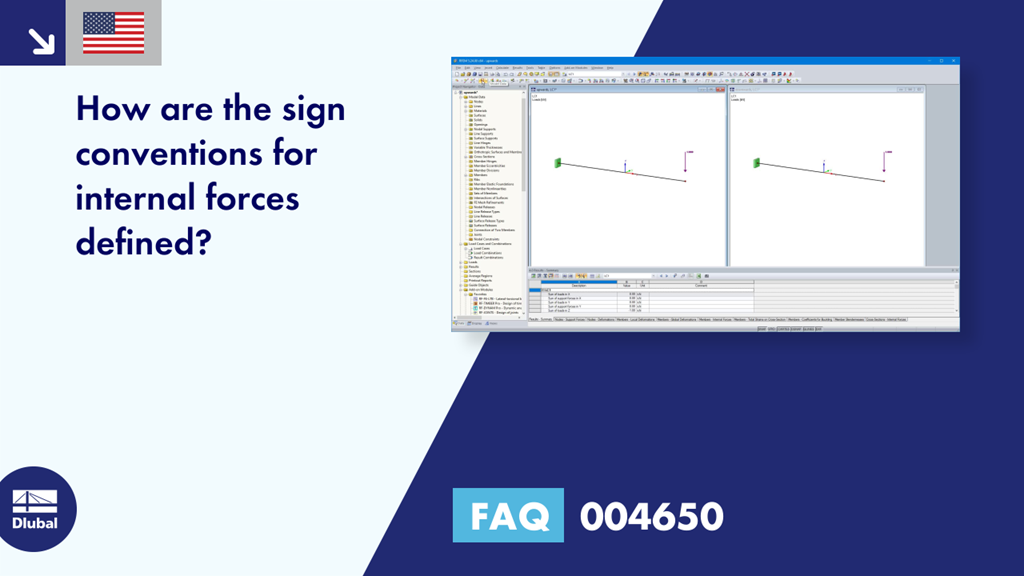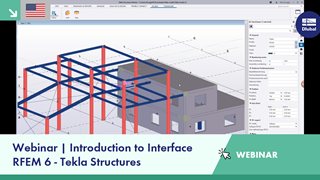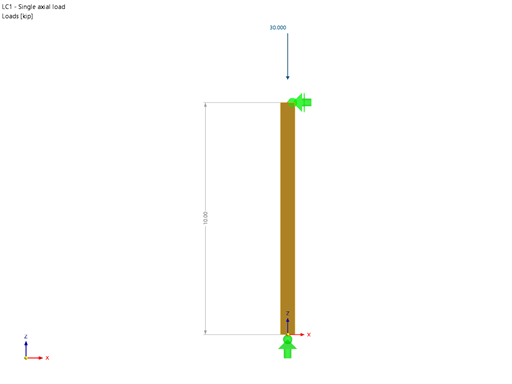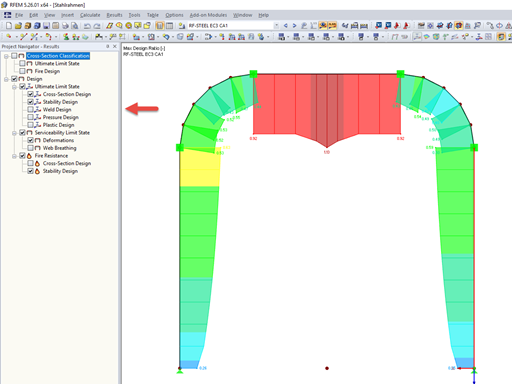Question:
How are the sign conventions for internal forces defined?
Answer:
The sign convention depends on the orientation of the local z-axis. In the General Data, you can define the orientation of it (see Image 01).
If the global Z-axis is oriented downwards, the local z-axis is automatically oriented downwards. It is not possible to orient them upwards. If the global z-axis is still oriented upwards, you have the option to determine the orientation of the local z‑axis upwards or downwards.
If the orientation of the local z-axis is set to downwards in the General Data, the following applies:
The bending moment M-y is positive if tensile stresses occur at the positive member face (in the direction of the z axis). M-z is positive if compressive stresses occur at the positive member face (in the direction of the y axis). The sign definition for torsional moments, axial forces, and shear forces conforms to the usual conventions: These internal forces are positive if they act on the positive cut face in a positive direction.
If the orientation of the local z-axis is set to upwards in the General Data, the following applies:
The bending moment M-y is positive if compressive stresses occur at the positive member face (in the direction of the z axis). M-z is positive if tensile stresses occur at the positive member face (in the direction of the y axis). The sign definition for torsional moments and axial forces conforms to the usual conventions. These internal forces are positive if they act on the positive cut face in a positive direction. The shear forces are positive if they act in the negative direction on the positive face.


















































